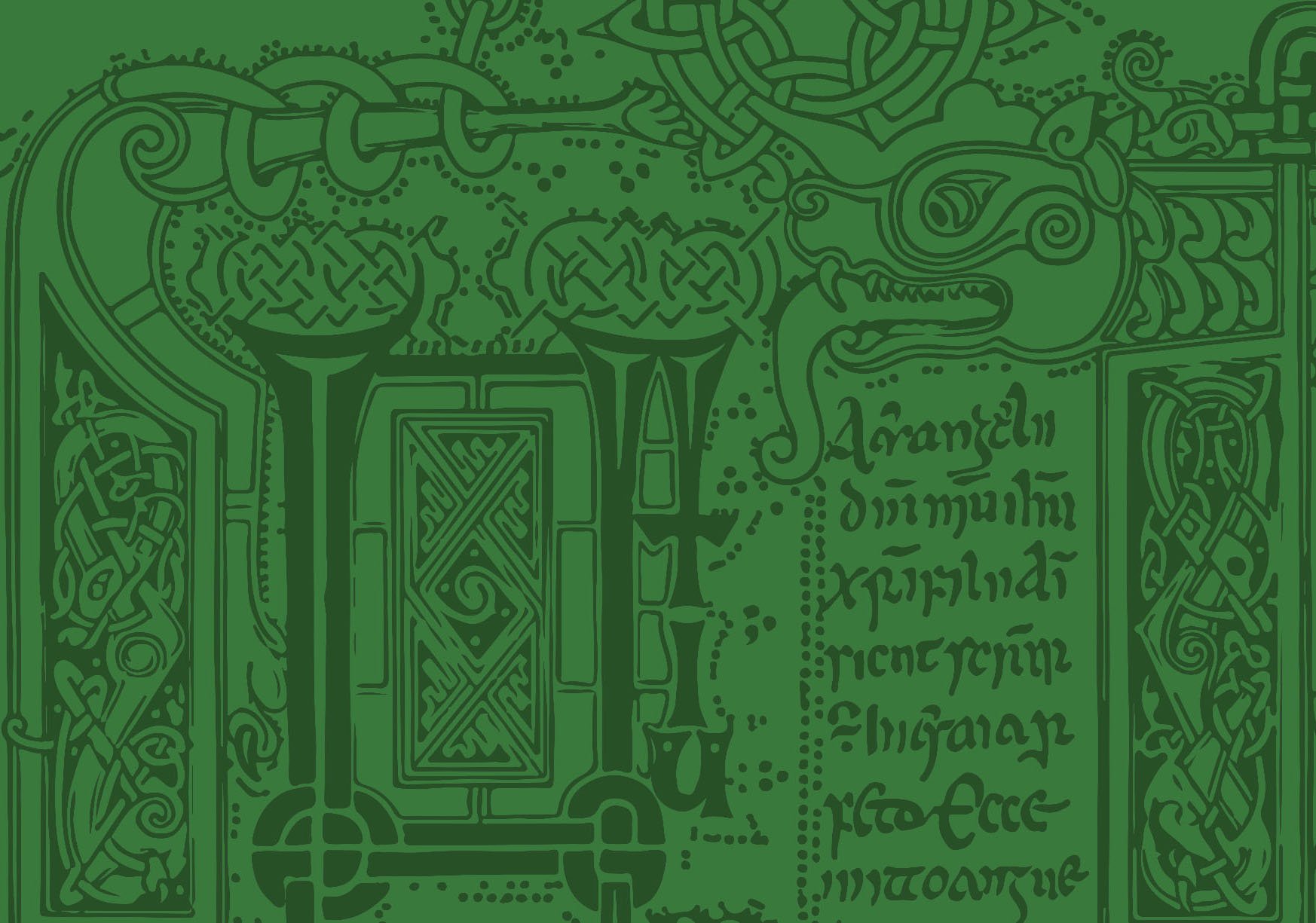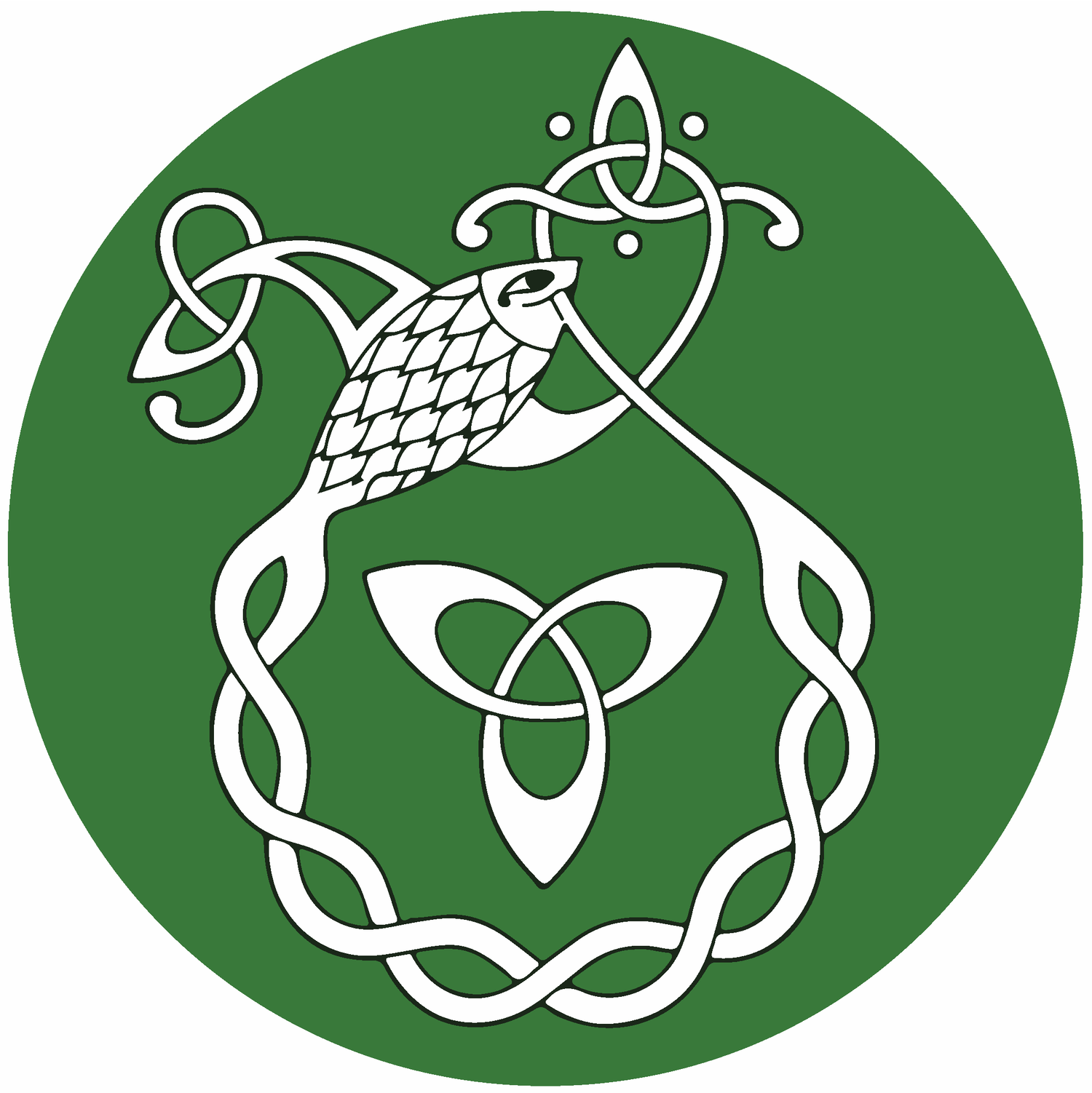
Oral Arts
Ealaíonta Béil
As an oral culture, traditional Gaelic spoken arts encompass a variety of oral and (now) written traditions. Irish poetry and storytelling, with complex rhyme patterns, helped preserve our history when many people couldn't read or write. Oral arts such as storytelling, “agallamh beirte” and riddles pass to us our humor, wisdom, moral lessons, history, and relationships as a people. As reading and writing began to be allowed and taught for the Gaels, small parts of the oral culture began to be written down. Still, Gaelic culture is mainly oral, and most of the vast and ancient aspects of the culture remain only in the mouths of speakers. Our oral culture is a direct living connection to our ancient ancestors, to our history and to the purest aspects of our culture.

Agallamh Beirte
Agallamh Beirte is a traditional Irish oral art that translates to "dialogue between two." It is a form of conversation poetry in which two performers engage in a lively exchange, discussing often extremely topical subjects such as current newsworthy events.
Agallamh Beirte involves alternating speeches between the two performers. They may engage in a friendly debate, share stories, or engage in a poetic contest. These conversations are characterized by their poetic nature, with the language often rich in metaphors, allusions, and rhetorical devices. The dialogue can be playful, witty, and filled with wordplay, showcasing the poetic skills of the performers involved.
A form of agallamh beirte that involves responding to each other’s witty debate using a common tune between the two performers is called “lúibíní”, or a “twisting of the mind”.

Poetry
Traditional Irish language poetry is broadly classed into three periods, depending on the style of rhyme during each period:
-
Alliterative syllabic verse, usually concerning heroic matters - either praises for the famous or laments for the dead.
Poetry concerns the nature and the world surrounding us
Devotional Poetry
-
The period of bardic poetry and the Dán Díreach method.
Poems usually relate geneologies, place-lore, praise poetry, and satires (of such venom they would raise boils on the target)
The Dán Díreach method included:
Set number of syllables for each line
Lines rhyme according to a set pattern
Ornamentation of every line, at least once
Each verse, the final 3rd-line word must rhyme with a non-final 4th-line word
Rhythm must be maintained
-
With the decline of the language due to colonial policies and the destruction of the Gaelic Old Order, including the education system and bardic system, folk poetry came to dominate.
Poetry was used to describe and celebrate daily life matters. People of lower social status become more of a focus, as they are now the creators.

Riddles
Riddles, known as "tomhais" in Irish Gaelic, are a deeply rooted part of Irish culture. Greek historians noted that the Celtic people of Gaul “converse with few words and in riddles, hinting darkly at things for the most part and using one word when they mean another.” Riddles contribute to the oral tradition, transmitting knowledge and cultural values through wordplay, metaphors, and linguistic creativity. Riddles stimulate intellectual growth, fostering critical thinking, problem-solving, and linguistic skills while providing social entertainment and bonding. Rooted in folklore and mythology, riddles and metaphors were used by both the ancient druids and medieval bards in a form of Irish called “Béarla Filí” to speak among themselves while keeping their knowledge and training unintelligible to outsiders.
cliceáil thíos chun tomhais
click below for a riddle (Answer backwards here ←)
Tomhas eile / Another riddle
Storytelling
The Seanchaí
Seanchaithe, storytellers, were the definition of entertainment in ancient Ireland. Holding the gathered history, genealogies, epics, and legends, the seanchaithe acted not only as storyteller but as geographers, historians and psychologists to their communities.
Seanchaithe served the great Gaelic families, keeping record of laws, genealogies, annals, literature, etc. After the destruction of the Gaelic order in the 1600s by the English conquests, the seanchaí became the traditional storytellers of the Gaelic-speaking lower class.
The Importance of Storytelling
Books contain only an echo of the richness of oral literature. As literacy in Irish was heavily discouraged, storytelling was the main way in which Irish-speakers could know their own history, the surroundings, their morals, their beliefs, and their sorrows. The seanchaithe used a number of storytelling methods and gestures that were specific to the Irish tradition. One of the most notable feature is the very large number of stories that each storyteller would know, and would transmit to the next generation, without ever being written down.
“It kept memories alive, on the serious level, but on a whimsical, entertaining level. The biggest and saddest impact of colonialism was the Irish language…Colonialism was devastating and the effects are still going on, but in the true Irish spirit, in spite of people living in boháns and hovels, and people dying with the hunger, we’ve survived.”
The seanchaí is an important link in Irish cultural heritage, to ourselves and to our ancestors who could neither read nor write, but who could tell stories.
Techniques
Each story is said to have its own sound, its own rhythm, and it is the challenge of the storyteller to find that sound, that rhythm. A storyteller will not tell the story the exact same each time, just like an Irish musician will alter a tune with each playing. There will be set points or phrases in the story though that do remain fixed.
“Nuair a thosnaímse ag insint scéil, pictiúir a chím agus pictiúir a leanaim, mar shampla, Cearc an Phrompa, chím an chearc, chím an cnó beag ag titim anuas uirthi, chím í ag rith agus ag rá ‘ó Dia le m’anam, tá an t-aer agus an talamh titithe ar a chéile.’”
Some small physical gesture may be used, to an extent, such as nodding the head, pointing, or using an object such as a stick for emphasis. However, storytelling is not acting.
Usually, set phrases will be used. These have been refined over generations for their rhythm and rhyme and have become a feature of the storytelling tradition:
“ó mo dhá chluais a chuala é, mo dhá shúil a chonaic é”
“Bhí suaimhneas ortha as san amach agus mhaireadar go síoch grách i bhfocair a chéile gan cíos, cás, ná cathú”
“Sin é mo scéal, agus Má tá bréag ann bíodh -- ní mise a chum ná a cheap é.”
Importantly, storytelling is a art that must be practiced and refined. The only way to be able to effectively read an audience is through making mistakes and trying various methods. You should strive to enjoy the story you are telling so much that you no longer have to try to remember it.
Oíche Sheanchais
Oidhche Sheanchais (Robert Flaherty, 1935) is considered the first Irish language sound film. The film captures an the telling of the traditional story “Máirtín Mac an Rí” by seanchaí Seáinín Tom Ó Dioráin. The film opened in a small number of cinemas in Dublin and Cork on St. Patrick's Day in 1935. A fire in 1943 was believed to have destroyed all copies in 1943, but a nitrate print was discovered in Harvard University's Library in 2012.
